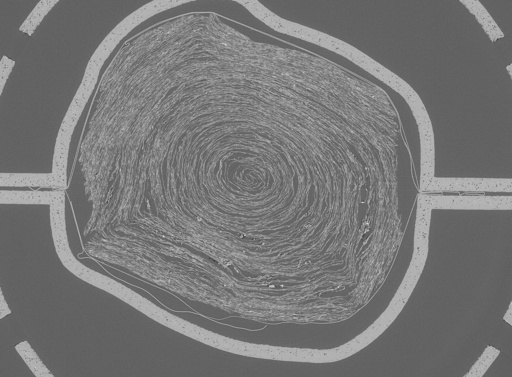LONDON — Researchers are optimistic that a combination of artificial intelligence and human knowledge will be crucial in unlocking the secrets of ancient scrolls that were carbonized during a volcanic eruption approximately 2,000 years ago.
These papyrus scrolls were unearthed in the 1750s from the remains of an extravagant villa located in Herculaneum, a Roman town that, along with nearby Pompeii, was buried by the eruption of Mount Vesuvius in A.D. 79. The scrolls come from what is known as the Villa of the Papyri, which potentially harbors significant insights into ancient philosophical thought if only they could be read.
The intense heat and volcanic ash produced by the eruption destroyed much of the town while simultaneously preserving the scrolls in a charred state, turning them into delicate blocks that are prone to disintegration when physically unrolled. For over 250 years, scholars and scientists have sought methods to decipher these ancient writings, with most of the scrolls housed at the National Library of Naples.
In 2023, several technology entrepreneurs inaugurated the “Vesuvius Challenge,” providing monetary awards for innovative approaches utilizing machine learning, computer vision, and geometry to interpret the scrolls. Recently, organizers announced a significant achievement, stating they had successfully produced the first image of the interior of one of the three scrolls located at the Bodleian Library at Oxford University.
Brent Seales, a computer scientist from the University of Kentucky and co-founder of the Vesuvius Challenge, expressed excitement over the successful imaging of the scroll. He noted that this particular scroll reveals more recoverable text than any previously scanned scrolls from Herculaneum.
The imaging was conducted using Diamond Light Source, a facility in Harwell, near Oxford, which employs a synchrotron particle accelerator to emit powerful X-rays. Researchers then applied AI technology to compile the captured images, identify ink patterns indicative of writing, and enhance the legibility of the text. This meticulous process resulted in the creation of a 3D model of the scroll, enabling experts to virtually unroll it through a method known as segmentation.
However, the application of AI has its limitations, and only a minimal amount of text has been deciphered. So far, one decipherable word appears to be the ancient Greek term for “disgust.” Scholars are actively encouraged to participate in efforts to further decode the text.
Peter Toth, the Cornelia Starks Curator of Greek Collections at the Bodleian, remarked on the ongoing nature of this endeavor, stating, “We are still at the beginning of a long process.” He emphasized the need for better imaging technology and expressed strong confidence that image quality and clarity of the text can continue to improve.
Toth also conveyed hope that technologies developed during this project might eventually be accessible locally, allowing for the analysis of the other two brittle scrolls without the need to transport them to Diamond’s facilities. “Perhaps there will be portable solutions,” he commented. “And let’s not forget, there are still around 1,000 more scrolls in Naples waiting to be explored.”



